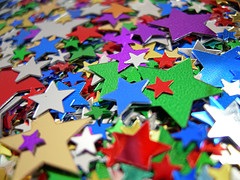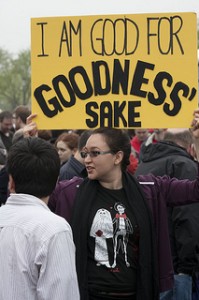
With the holiday season upon us here in the United States, we often hear a bit more than usual about miracles. This seasonal trend isn’t the only trend of note, though. A few weeks ago, the Huffington Post’s David Briggs told us the number of Americans who believe in miracles at any time of year has increased over the last few decades.
Drawing on General Social Survey data, sociologist Robert Martin found that about 4 out of 5 Americans believe that miracles probably or definitely occur. The percent of people who “definitely” believe in miracles rose from 45 percent in 1991 to 55 percent in 2008.
Beliefs in heaven and hell have remained steady in recent decades, and the increased belief in miracles crosses all religious traditions, even to those with no religious affiliation. What might explain this change?
One potential explanation, according to Martin, is the cultural preoccupation with miracles promoted in non-dogmatic ways by a series of popular television programs such as “Touched by an Angel” and best-selling books such as the “Left Behind” and “Chicken Soup for the Soul” series. Martin and other researchers even point out that no one has likely done more for miracles than Oprah. (For a sociological study of Oprah, see here). Her television show made accounts of proclaimed miracles a regular part of the lives of millions of viewers.
Sociologist Kevin Dougherty also weighs in, noting that, in the United States, “There’s still this profound interest in spiritual things,” even as fewer Americans identify with a religious group.









